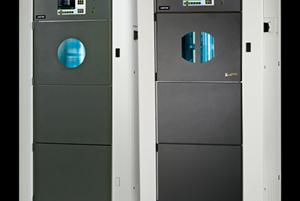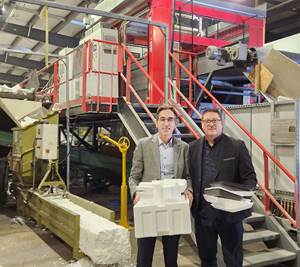Downward Pricing for Polyolefins, PET; Flat-to-Up for PS, PVC
Overall, slowed global demand and improved supply/demand balance scenarios are likely to keep prices of the five volume resins relatively stable.
As we got into the second half of the year, the pricing trajectory has been downward for PP, PET and PE. Actually, prices of PP and PET may bottom out this month, owing to typical inventory buildup in the July-August timeframe for the former and upward pressure from feedstock costs for the latter. In contrast, prices of PE are generally expected to drop owing to a decline in global prices and an amply supplied market. There’s an upward pricing trajectory for PS and PVC, driven by feedstock benzene in the case of the former and suppliers’ claims of tight supply in the case of the latter. However, in the case of both resins, all other key driving factors are pointing to a flat-to-down trajectory.
Here’s a look at how some of our key industry resin pricing experts view things for each of the top five commodity volume resins including, purchasing consultants from Resin Technology, Inc. (RTi), Fort Worth, Texas; senior editors from Houston-based PetroChemWire (PCW); and CEO Michael Greenberg of the Plastics Exchange in Chicago.
▪ PE: Prices have largely been expected to drop in the June-July timeframe, despite suppliers’ June 3¢/lb price initiative, following implementation of the May 3¢/lb hike. This, according to Mike Burns, RTi’s v.p. of PE, PCW senior editor David Barry, and The Plastic Exchange’s Greenberg.
First, suppliers have delayed the 3¢/lb increase to this month and, second, there have been industry rumors that some processors saw a 3¢/lb drop in June. However, no suppliers have officially made such a concession. RTi’s Burns had ventured that prices had some potential to drop by 3¢/lb by June’s end, and even more potential to drop by 3¢/lb in this month, followed by flat pricing in August, depending on the previous months’ price drop. ”Global prices have dropped, export prices have dropped and domestic prices will have to keep up with the global price range.” Burns maintained that record inventories without production or weather disruptions should continue to prevent price hikes and add to downward pressure.
Meanwhile, PCW’s Barry had ventured that suppliers would aim to keep price flat in June but expects a drop of 3¢/lb this month. Citing ACC numbers through May year-to-date, Barry noted that PE domestic sales were up 2.4%, export volumes were up more than 50%, while production rates were up 7%.
Barry also reports that spot PE prices have continued to fall—dropping to the lowest levels since 2009. In fact, Greenberg reports the spot PE market ended June somewhat sluggish, contrasting with the first five months which saw volumes well above that same period in 2018. “As a whole, June was the lightest trading month of the year as negative sentiment slowed processor purchases, which weighed on prices.”
▪ PP: Prices in June dropped 3.5¢/lb in step with propylene monomer contracts, according to Scott Newell, RTi’s v.p. of PP markets, PCW’s David Barry and The Plastic Exchange’s Greenberg.
PCW’s Barry notes that PP spot prices have been flat to lower amid falling monomer costs and lackluster domestic demand. “Domestic sales were robust in April-May, but falling resin prices and soft manufacturing data had resin processors moving cautiously on new purchases. Also, the market has shifted to a more balanced-to-long dynamic in June, with most plants running smoothly after some production hiccups early in 2Q.”
Barry characterizes spot availability as decent, but with relatively quiet buying activity after a busy March-April timeframe. RTi’s Newell who had ventured the monomer and PP price decline to be higher, based on an 8¢/lb drop in spot prices last month, notes that demand has been lackluster, with a bit of an uptick in May, and spot PP heavily discounted. Commenting on the spot PP market, The Plastics Exchange’s Greenberg reports, that spot PP trading was improving. “Processors picked away at well-priced offers, but easily shied away from relatively high asking prices when presented. While the overall market tone remains heavy right now, it seems that downside could be limited as upstream inventories are the lightest we have seen in the dozen years that we have been tracking.”
RTi’s Newell notes that June was the fourth month of continuous draws from supplier inventories—a drop of 175 million lbs, but that days of supply which dropped from 39 days in May, stood at a “comfortable” 31.5 days in June. PCW’s Barry reports that the PP supply situation is somewhat of a ‘mixed bag’ depending on the supplier. “I don’t think the market is that oversupplied that suppliers will cut down production.” All three sources cite soft global PP demand along with new capacity overseas, and a good supply picture emerging for propylene monomer. Since the July-August timeframe is typically a good time for inventory buildup, Newell ventures PP prices to be flat-to-slightly up in that time frame.
▪ PS: Prices were flat for June, but upward pressure is in the offing this month, as benzene spot prices shot up to $3 gal. Both PCW’s Barry and Robin Chesshier, RTi’s v.p. of PE, PS and nylon 6 markets expected PS prices to move up by several cents, if July benzene contract prices settle at $3/gal or more, up from $2.34/gal. Chesshier ventures there’s an unprecedented potential for a 7-8¢/lb price increase. Barry ventures a price hike closer to 3-4¢/lb being implemented.
Domestic PS prices moved up a total of 4¢/lb since the beginning of the year. This despite lackluster demand which even lagged as the seasonally higher demand period progressed compared to 2018. Chesshier notes that the benzene uptick is being driven by tighter supplies both domestically and in exports—the latter due to a drought in the Panama Canal region, which resulted in higher transport prices. Also notable is that spot prices of styrene monomer have not moved, owing to sluggish demand here and for exports—a nearly a triple-digit decline in demand in Europe alone. As previously noted by Chesshier, domestic supply was up 2% while demand was only 1%, and exports for both monomer and PS were down by 17%.
▪ PVC: Prices in May and well into June were flat, though suppliers were still out with their June 2 ¢/lb increase, according to both Mark Kallman, RTi’s v.p. of PVC and engineering resins, and PCW senior editor Donna Todd. Kallman ventures that prices for June and July could go either way—flat or up 1¢/lb each, as suppliers push to implement price increases attributed to tight supplies due to both planned and unplanned production downtime this year—with domestic production down by 2.6% through May, year-to-date.
However, all other market indicators in that timeframe have been an opposing force: domestic demand is down 3.7% from 2018, exports were up by 1.44%. May housing starts were lower than the previous year and the construction season in general had been slow to get going, noted Kallman. Moreover, both sources also noted that the June ethylene contract price was once again expected to drop. Ethylene price declines from last fall through the May contract ethylene settlement totaled 9.5¢/lb, which would represent a drop of about 4.56 ¢/lb into the PVC molecule, according to Todd. Both sources also questionned suppliers’ other justification for a price increase—rising export prices. “Since only about 30% of U.S. PVC production goes into the export market, even some suppliers have confided that this should not be able to pull up the domestic market, which comprises about 70% of production,” reports PCW’s Todd.
▪ PET: Prices stood at the mid 50¢/lb range by the end of June, a 10¢/lb drop from May. The plunge was driven primarily by lower costs of feedstocks and plentiful supply of imported PET from around the world, according to PCW senior editor Xavier Cronin. Interestingly, PET resin imports in April were actually down from April 2018. But a surplus in import locations in Southern California, the East Coast and Midwest built up over months has kept it a buyers’ market.
At the same time, prices are thought to have bottomed out, with distributors pointing to higher projected costs for feedstocks PTA and MEG this month. Also, rising oil prices were expected to add to further downstream price pressure on PET feedstocks and subsequently resin. With this in mind, July PET prices are expected to rebound first to the 60¢/lb level and then another 2-5¢/lb, depending on whether the business is spot or based on contracts tied to monthly published feedstock prices; spot prices are typically higher than contract pricing, explains Cronin.
Related Content
Compact Entry Rotating-Rack Series of Weather Testers Expanded
Atlas’ Xenotest now also available to meet American standards.
Read MoreNexkemia Acquires Polystyrene Recycling Assets
The polystyrene manufacturer finalized its purchase of Eco-Captation, a recycler.
Read MoreEV Chargers Made From Renewable PC
SABIC is enabling Charge Amps to manufacture electric vehicle (EV) chargers with a housing made from certified renewable PC, a first for the industry.
Read MoreLyondellBasell Showcasing End-Use Applications in 5 Key Markets
NPE2024: LYB is highlighting applications in circularity, mobility and transportation, food and medical, consumer goods/lifestyle, and infrastructure/building and construction.
Read MoreRead Next
Making the Circular Economy a Reality
Driven by brand owner demands and new worldwide legislation, the entire supply chain is working toward the shift to circularity, with some evidence the circular economy has already begun.
Read MoreSee Recyclers Close the Loop on Trade Show Production Scrap at NPE2024
A collaboration between show organizer PLASTICS, recycler CPR and size reduction experts WEIMA and Conair recovered and recycled all production scrap at NPE2024.
Read More




























